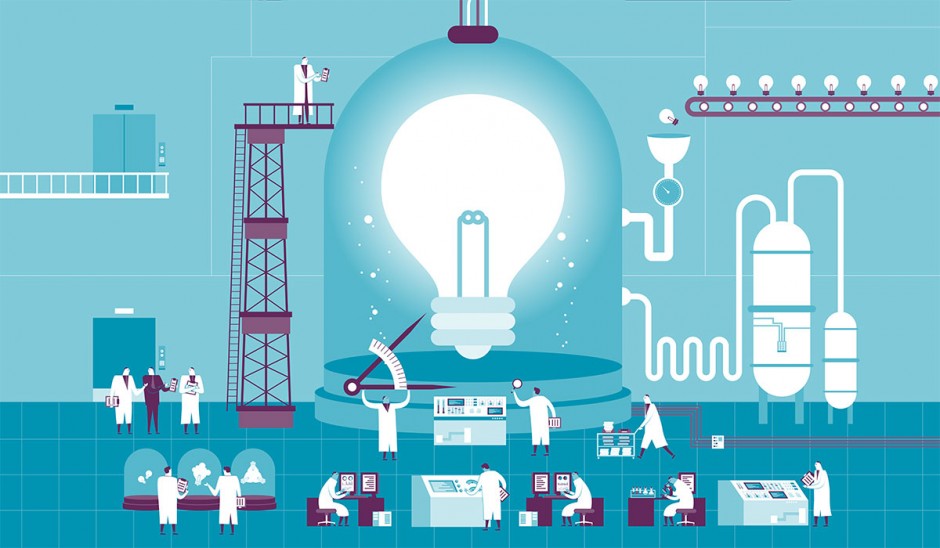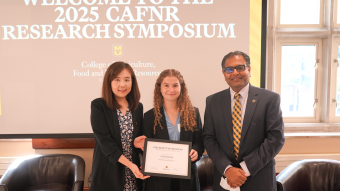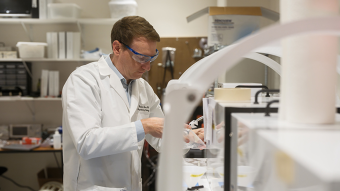Mizzou had a big year in research. In 2014 we welcomed a new vice chancellor for research and graduate studies. We garnered major grants from the National Institutes of Health, the National Science Foundation and the Centers for Disease Control and Prevention. We joined in state research consortia to investigate climate variability and the status of women. We also entered a partnership to study ancient Roman artifacts.
Amid the campuswide activity, Tigers toiled in the lab, in the field and in the classroom. Here's what they discovered.
1. Plants can hear themselves being eaten.
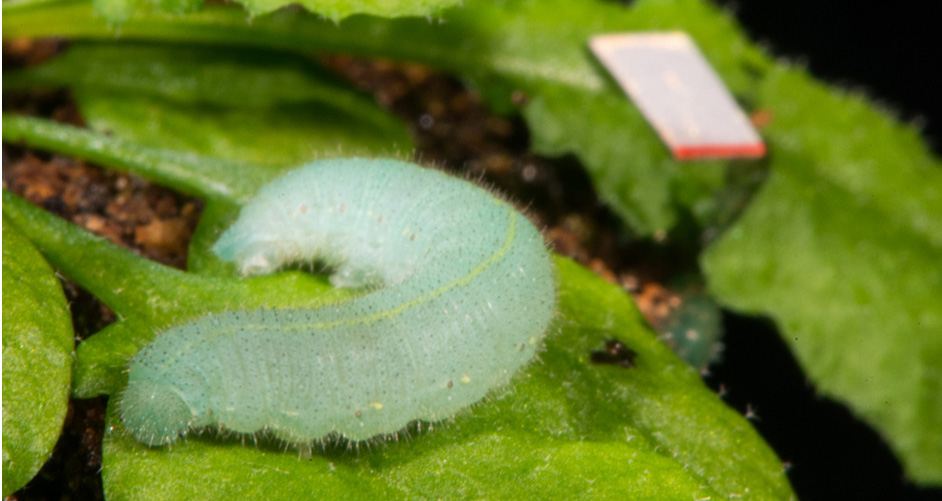 Who knew The Very Hungry Caterpillar was a horror story? Heidi Appel in plant sciences and Rex Cocroft in biological sciences discovered that plants can recognize the sound of insects chewing on them. They detect the distinctive vibrations caused by being, well, consumed, and they respond by releasing defensive chemicals.
Who knew The Very Hungry Caterpillar was a horror story? Heidi Appel in plant sciences and Rex Cocroft in biological sciences discovered that plants can recognize the sound of insects chewing on them. They detect the distinctive vibrations caused by being, well, consumed, and they respond by releasing defensive chemicals.
2. Mentors can help millennials save their friendships — and their wardrobes.
 Connie Brooks in health psychology and Melissa Maras in educational psychology developed an intervention method — called Growing Interpersonal Relationships through Learning and Systemic Supports (GIRLSS) — through which caregivers can help reduce relational aggression, aka mean-girl behavior, in teens. So fetch. Meanwhile, Pamela Norum in textile and apparel management figured out that millennials could learn a thing or two from Baby Boomers when it comes to taking care of their clothes. (Hint: Learn how to sew on a button, youths.)
Connie Brooks in health psychology and Melissa Maras in educational psychology developed an intervention method — called Growing Interpersonal Relationships through Learning and Systemic Supports (GIRLSS) — through which caregivers can help reduce relational aggression, aka mean-girl behavior, in teens. So fetch. Meanwhile, Pamela Norum in textile and apparel management figured out that millennials could learn a thing or two from Baby Boomers when it comes to taking care of their clothes. (Hint: Learn how to sew on a button, youths.)
3. The world's first water-based nuclear battery could take us into orbit.
 Jae Kwon and Baek Hyun Kim in engineering have created the first water-based nuclear battery. It can generate electricity at low temperatures and has the potential for many next-generation energy applications, such as powering automobiles and spaceships.
Jae Kwon and Baek Hyun Kim in engineering have created the first water-based nuclear battery. It can generate electricity at low temperatures and has the potential for many next-generation energy applications, such as powering automobiles and spaceships.
4. Salamanders are important.
 Ray Semlitsch in biological sciences found that salamanders are among the main food sources in forest ecosystems, and their protection is essential to nature conservation.
Ray Semlitsch in biological sciences found that salamanders are among the main food sources in forest ecosystems, and their protection is essential to nature conservation.
5. Breakfast — especially high-protein breakfast — is really good for you, and soda (in moderation) isn’t that bad.
 Heather Leidy in nutrition and exercise physiology found that breakfast helps teens prevent obesity and protein-rich breakfast helps regulate glucose levels in women. Her colleague, Jill Kanaley, found that sugary beverages, if consumed infrequently and in small quantities, might not be as detrimental to adolescents as nutritionists previously thought.
Heather Leidy in nutrition and exercise physiology found that breakfast helps teens prevent obesity and protein-rich breakfast helps regulate glucose levels in women. Her colleague, Jill Kanaley, found that sugary beverages, if consumed infrequently and in small quantities, might not be as detrimental to adolescents as nutritionists previously thought.
6. Aquatic animals teach us about human neurology.
 In the Division of Biological Sciences, Anand Chandrasekhar studies neuron migration in see-through baby zebrafish to better understand human birth defects, such as spina bifida, and David Schulz works with neurons in Jonah crabs to learn more about human neurological disorders, such as epilepsy.
In the Division of Biological Sciences, Anand Chandrasekhar studies neuron migration in see-through baby zebrafish to better understand human birth defects, such as spina bifida, and David Schulz works with neurons in Jonah crabs to learn more about human neurological disorders, such as epilepsy.
7. We have lots of ways to help people with autism spectrum disorders. Like puppy love.
 Gretchen Carlisle in the Research Center for Human-Animal Interaction showed that dogs help alleviate stress and improve social confidence among kids with autism spectrum disorders (ASD). David Beversdorf in radiology and neurology found that people with ASD can benefit from the anti-anxiety drug propranolol. And Nancy Cheak-Zamora in the Thompson Center is expanding her research to help teens with ASD make a smoother transition to adulthood and independence.
Gretchen Carlisle in the Research Center for Human-Animal Interaction showed that dogs help alleviate stress and improve social confidence among kids with autism spectrum disorders (ASD). David Beversdorf in radiology and neurology found that people with ASD can benefit from the anti-anxiety drug propranolol. And Nancy Cheak-Zamora in the Thompson Center is expanding her research to help teens with ASD make a smoother transition to adulthood and independence.
8. Scientific databases can help us treat cat (and human) diseases, improve soybeans and save the world's chocolate supply.
 Trupti Joshi in engineering and her team of life-sciences collaborators created the Soybean Knowledge Base (SoyKB), a free online data resource farmers and scientists all over the world can use for soybean research. Cinnamon, an Abyssinian cat in the College of Veterinary Medicine, participated in the Feline Genome Project, which can help researchers understand leukemia, AIDS and kidney disease. Chocolate scientist Scott Kelsey Askinosie in biological sciences brought cacao expert Ed Seguine to campus to explain how plant scientists can save the world's endangered chocolate supply, using the Cacao Genome Database.
Trupti Joshi in engineering and her team of life-sciences collaborators created the Soybean Knowledge Base (SoyKB), a free online data resource farmers and scientists all over the world can use for soybean research. Cinnamon, an Abyssinian cat in the College of Veterinary Medicine, participated in the Feline Genome Project, which can help researchers understand leukemia, AIDS and kidney disease. Chocolate scientist Scott Kelsey Askinosie in biological sciences brought cacao expert Ed Seguine to campus to explain how plant scientists can save the world's endangered chocolate supply, using the Cacao Genome Database.
9. Athletes really do slack off after contract years.
 Ken Sheldon in psychological sciences found that the promise of a reward causes the performance of professional athletes to peak during years that their contracts are up for renewal but undermines their intrinsic motivation, leading to a post-contract-year slump.
Ken Sheldon in psychological sciences found that the promise of a reward causes the performance of professional athletes to peak during years that their contracts are up for renewal but undermines their intrinsic motivation, leading to a post-contract-year slump.
10. BPA is in store receipts, and it's dangerous for all primates.
 Research rock star Frederick vom Saal in biological sciences found high levels of the endocrine-disrupting chemical bisphenol A (BPA) in cash-register receipts. He also discovered that daily exposure to low concentrations of BPA among pregnant female primates can cause fetal abnormalities.
Research rock star Frederick vom Saal in biological sciences found high levels of the endocrine-disrupting chemical bisphenol A (BPA) in cash-register receipts. He also discovered that daily exposure to low concentrations of BPA among pregnant female primates can cause fetal abnormalities.
11. Newly developed and re-purposed drugs can treat breast cancer, HIV and spinal muscular atrophy.
 Tumor angiogenesis specialist Salman Hyder and his research team found that a cholesterol drug can treat breast cancer. Virologist Stefan Sarafianos discovered that a compound used to stop the spread of HIV can treat drug-resistant strains of the disease. Chris Lorson in veterinary pathobiology patented a new drug that represses neurodegenerative diseases in animals and can treat spinal muscular atrophy in humans.
Tumor angiogenesis specialist Salman Hyder and his research team found that a cholesterol drug can treat breast cancer. Virologist Stefan Sarafianos discovered that a compound used to stop the spread of HIV can treat drug-resistant strains of the disease. Chris Lorson in veterinary pathobiology patented a new drug that represses neurodegenerative diseases in animals and can treat spinal muscular atrophy in humans.
12. Controlling bacteria benefits vulnerable plants and humans.
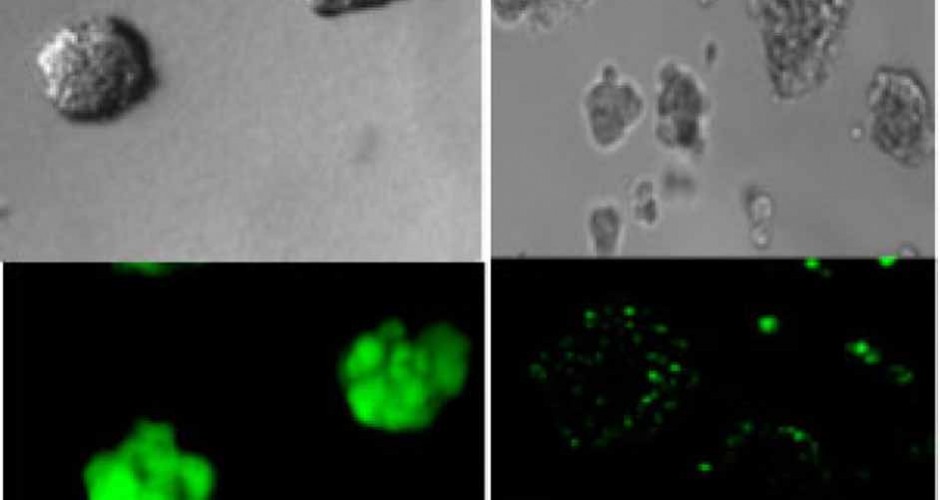 Scott Peck in biochemistry figured out how to help plants protect themselves from bacterial pathogens. Senthil Kumar in veterinary medicine found that a communication system in bacteria can be used to kill cancer cells and stop them from spreading.
Scott Peck in biochemistry figured out how to help plants protect themselves from bacterial pathogens. Senthil Kumar in veterinary medicine found that a communication system in bacteria can be used to kill cancer cells and stop them from spreading.
13. Office-park landscaping helps threatened birds — and working folk.
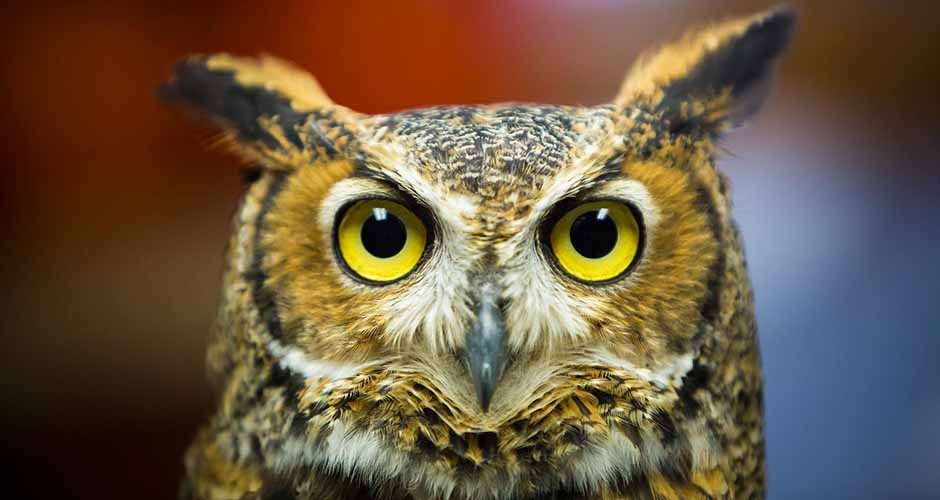 Charles Nilon and Jonathan Hogg in natural resources determined that businesses can contribute to raptor conservation. When office-park landscaping includes more trees and native grassland areas — and fewer lawn and pavement areas — the birds of prey can share the space and retain some of their shrinking habitat. Side benefit: The biodiversity improves employee morale.
Charles Nilon and Jonathan Hogg in natural resources determined that businesses can contribute to raptor conservation. When office-park landscaping includes more trees and native grassland areas — and fewer lawn and pavement areas — the birds of prey can share the space and retain some of their shrinking habitat. Side benefit: The biodiversity improves employee morale.
14. We can manage invasive species by eating them.
 Mark Morgan in natural resources discovered that the pesky Asian carp invading Midwestern waterways and squeezing out native species are actually pretty tasty. His research team put together recipes and conducted taste tests on campus. Now he's marketing the fish to Missouri grocery stores. If you can't beat 'em, eat em!
Mark Morgan in natural resources discovered that the pesky Asian carp invading Midwestern waterways and squeezing out native species are actually pretty tasty. His research team put together recipes and conducted taste tests on campus. Now he's marketing the fish to Missouri grocery stores. If you can't beat 'em, eat em!
